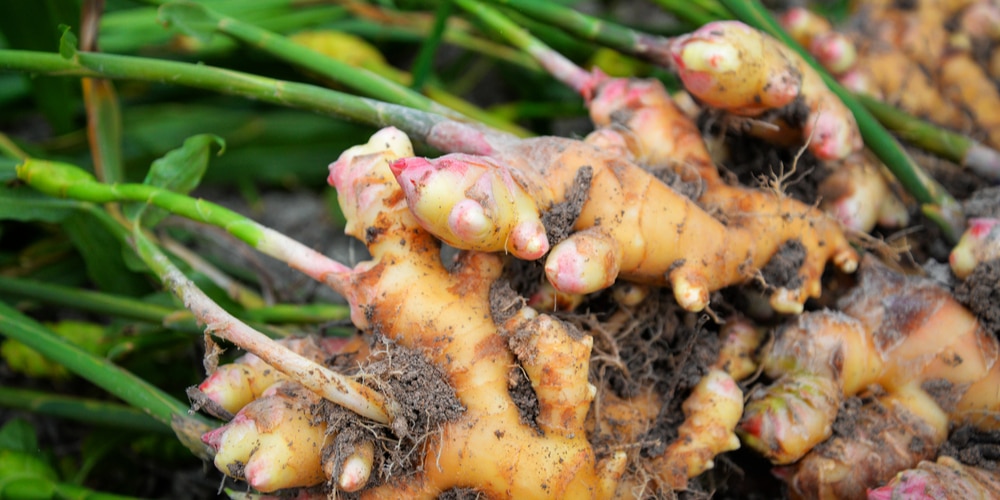Ginger is a flowering perennial herb for home cooks and culinary artists to create spices, herbs, candies, and even tasty ginger beers. However, technically speaking, ginger root is a vegetable with rhizomes whose plant stems send their roots and shoots into the soil.
The rhizome is the intricate stem part of the ginger root that grows horizontally underneath the soil, storing energy for the winter season and protecting it from frigid temperatures. In addition, the stem allows its nodes to produce other branches that grow floral greens above the ground.
Ginger loves warm tropical temperatures, filtered sunlight, and well-drained soil outdoors and indoors. However, gardeners seeking to grow ginger roots should cautiously proceed as ginger is a favorite food amongst insects.
In addition to diseases such as bacterial wilt and fusarium, yellowed leaves leave ginger roots appearing limp, with yellow leaves that show signs of soggy ooze that can spread from plant to plant.
What Can You Do With Ginger?
Ginger is one of the most favored roots for decorative lawns with fragrant flowers, delicious savors, and herbal health benefits.
Add Ginger To Your Landscapes
Ornamental gingers, also known as flowering gingers, are low-maintenance plants with rich, long-lasting, colorful blooms and unique foliage. They also carry an intense fragrance similar to that of an orchid.
Although the rhizomes grow underground, their leafy foliage is glossy green and varies by plant species. Other exotic ornamental gingers that gardeners enjoy include:
- Butterfly Ginger blooms with sunset pink and red flowers
- Red Ginger is tall with large-spiked red flowers
- Shell Ginger string together like pale white pearls
- Pineapple Ginger is beloved for its pineapple shape and bright red flowers
And they thrive under subtropical and tropical conditions making them the perfect addition to gardens that don’t experience winter.
Create Your Favorite Recipe
For hundreds of generations, ginger has been a spicy aromatic staple for spices, marinades, and remarkable flavor. In China, ginger is often paired with sesame oil and soy sauce and gently braised with a protein and vegetable.
In Jamaica, ginger brightens up smokey jerk chicken and flavorful curries. Japanese cuisines love to balance bold pickled ginger flavors with popular sushi dishes, yakitori grilled chicken, and yaki-ton grilled pork.
And during winter holidays, gingerbread men fill American homes with festivities, holiday spirit, and sweet fragrances of sugar, molasses, spicy ginger, cinnamon, and nutmeg.
Preserve For Medicine
Herbal ginger tonics remain a staple in holistic remedies for nausea influenced by pregnancy and chemotherapy, common cold symptoms, painful menstrual cycles, and upset stomachs. However, ginger is not simply just a tonic.
Medicinal ginger is potent as a tincture, oil, extract, dried, encapsulated, steam distilled, or eaten fresh with popular therapeutic food and drink.
Ginger Is a Must-Have Root
Despite the big elephant of a question in the room, “Is ginger a vegetable?” it doesn’t matter. Ginger root is not a vegetable or fruit but a timeless rhizome and a root grown to perfection and crafted into whatever you want it to be.

